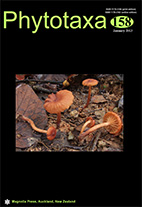Abstract
Fragilaria atomus was described from a brackish water lagoon in southern Finland and has subsequently been reported from several localities worldwide. However, due to its small size, it can be easily mistaken with other small, morphologically similar araphid diatoms. To clarify the morphological, metric and structural features of the species, lectotype material from BRM (Hustedt’s diatom collection) and specimens from salt marshes in Brazil were studied using light and scanning electron microscopy. Fragilaria atomus is compared to seven morphologically similar taxa belonging to Fragilaria, Stauroforma and Psammoneis. The results revealed that some important features of Fragilaria (discoid closing plates, rimoportulae and spines) are not present in F. atomus. The absence of these structures, together with the opposite striation pattern, round areolae, features of the apical pore field, and reduced or absent sternum, suggest that a transfer of F. atomus to Stauroforma is appropriate. The distribution and ecology of F. atomus is discussed.

